Suzuki Vitara long-term test
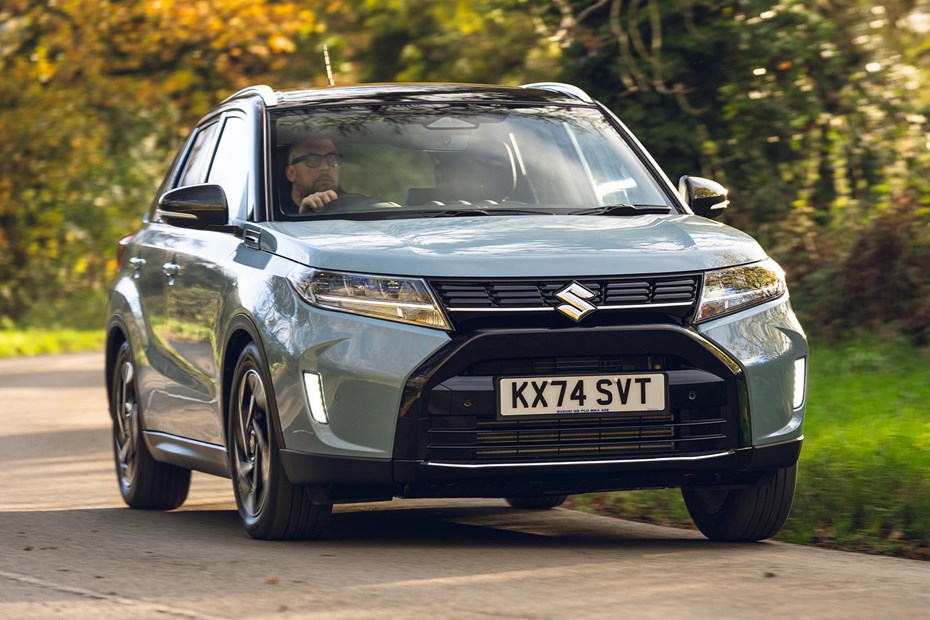
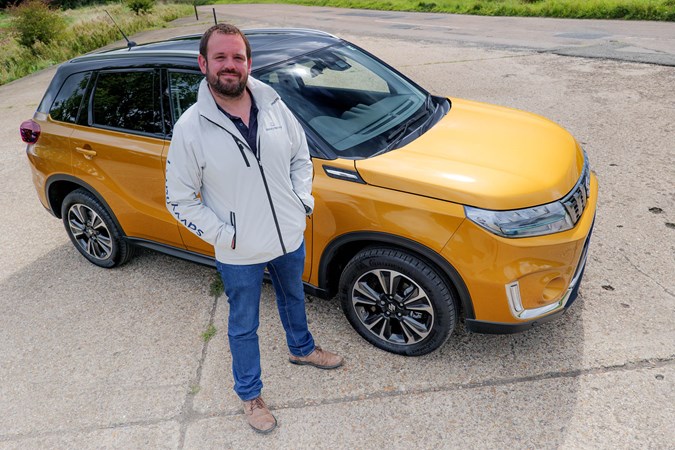
What is the Suzuki Vitara like to live with? Gareth Evans testing one over an extended period to find out how it works out as a family car, and how well it performs off-road. Is four-wheel drive worth the extra?
Jump to:
Update 1: Welcome
In the modern car market, there are SUVs and then there are SUVs – and this new Suzuki Vitara is the latter.
Let me explain for a moment: I’ve just spent half a year getting to know the VW T-Cross – a car that’s based heavily on the Polo hatchback but with a slightly taller driving height. In other words, it looked rough and ready, but underneath had no more actual capability to do anything off road. It’s very much the former type of SUV.
But the Vitara is a completely different proposition. For starters it’s a Suzuki, which means you get lots of clever, honest engineering that works. Take the manual gearbox, for example: it’s simple, yet brilliantly built and a joy to use.
And the cabin is full of buttons, which might sound like a strange comment, but too many cars nowadays have functions like driver-assistance features hidden in menus in touchscreens or on the instrument panel. This means distraction from the road, whereas in the Vitara it’s a simple button push. Simple, elegant design.
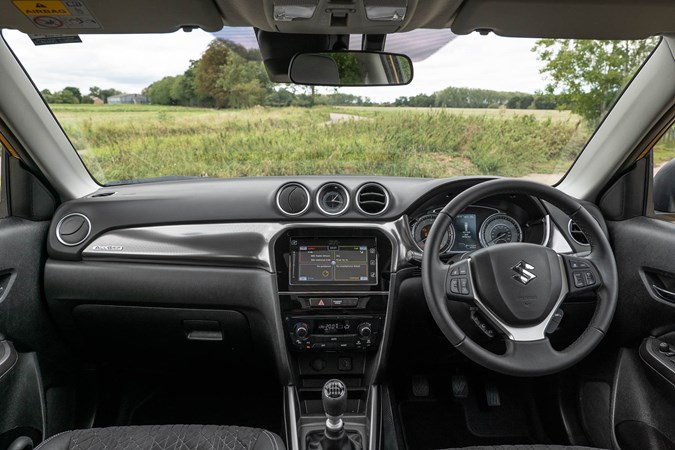
However, I’m not saying it’s a basic car either. It’s rammed to the gunwales with kit, in fact. Highlights from the spec sheet include:
- 130hp, 1.4-litre turbo engine shared with excellent Swift Sport
- Six-speed manual gearbox
- Mild hybrid assistance with all-wheel drive, including off-road functions and sport mode
- Suite of lane-keeping assistance, automatically adjusting cruise control, autonomous emergency braking, blindspot monitoring
- Touchscreen multimedia with Android Auto and Apple CarPlay
- Full-length, fully opening panoramic glass sunroof
That’s quite a spec of car, considering its list price is £27,349, and that includes the sole option on the car – the £800 Solar Yellow paintjob with contrasting black roof.
And it’s certainly a head-turner. I actually really like the way this car looks – my erstwhile colleague Richard Kilpatrick said it’s got a whiff of Range Rover about it at the front end, and I’m not going to disagree there. That places it perfectly in the context of my countryside lifestyle.
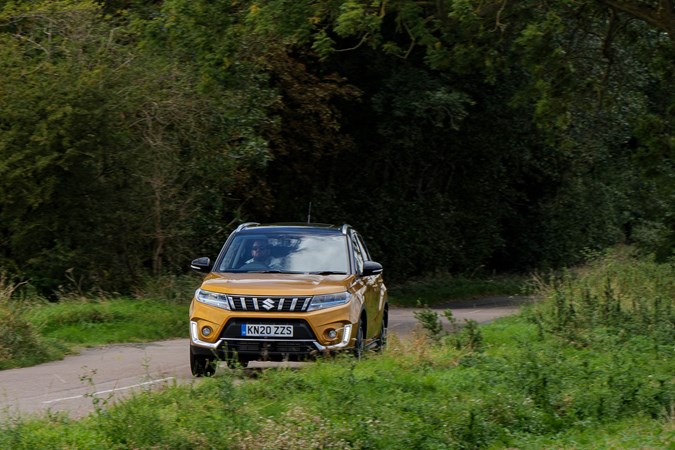
As we head through harvest season the roads are only going to get slipperier now, so I’m glad of the all-wheel drive system and its switchable modes, which offers Sport and locking differential options as well as the default Auto. I’m not sure I’ll make much use of Sport, which sends extra grunt to the rear axle, but the Lock mode will certainly help in ice and snow. This prevents the wheels from spinning independently, providing far more traction in slippery conditions.
In fact, I’m expecting this car to be exceptional off road. The name Vitara has long been associated with terrain-tackling 4x4s, harking right back to the 1980s. I do wish it had a spare wheel on the rear still, for the proper mud-plugging look, but instead there’s an inflation kit on board to keep weight low and aerodynamics as optimised as possible for low fuel economy. Let’s hope I can avoid any serious punctures this time around.
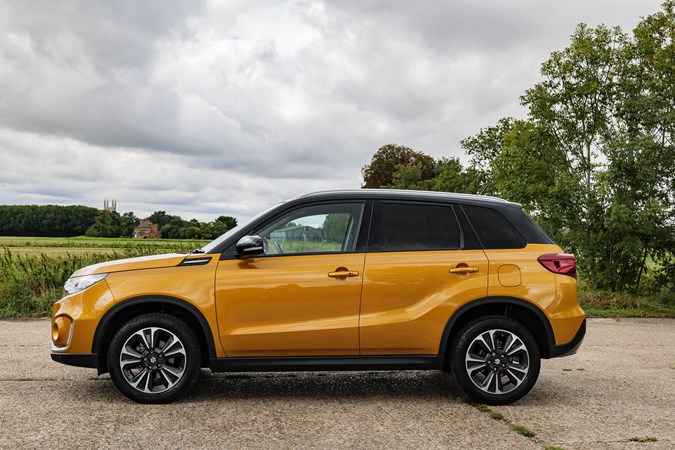
So to conclude, I’m overwhelmingly excited to spend some time with this yellow peril. Keep an eye out for more updates as I get to know it, and start to set it some challenges…
Mileage: 601
Fuel economy: n/a
Update 2: First impressions – love at first drive?
The first time I clapped eyes on this car I couldn’t help but smile. This was the start of six months with a machine I fully expected to be as capable and fit-for-purpose as any car I’ve run in this job. Suzuki’s become well known for its engineering and nowadays its cars come crammed with kit.
From a looks perspective I think it’s fabulous, with proper SUV looks to indicate this is more than a rebadged hatchback – I’m fully expecting the Vitara to tackle tough terrain better than pretty much any other car of a similar size.
In fact the only bit I don’t like about its looks are the badges on the back. They look like a rushed effort and while I know what they all mean (in order, Vitara is its name, ‘hybrid’ means the engine has extra electric assistance and ‘AllGrip’ means it’s got four-wheel drive) the designs don’t blend particularly well. It’s a shame because in all other aspects I like the aesthetics of the car.
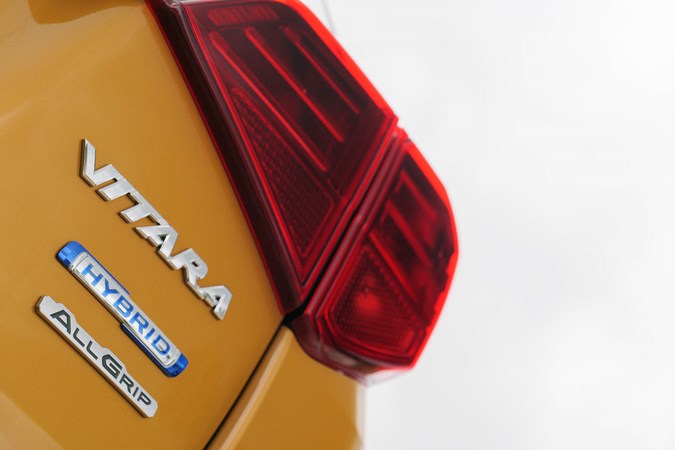
Anyway, upon opening the driver’s door for the first time something else struck me: the door itself is very light. Presumably this is one of the reasons this car is such a bantamweight in its class, because at just 1275kg it’s an extremely light 4x4 SUV.
That means it should be great on fuel, and coupled with a mild hybrid system I’m expecting impressive economy stats, particularly when I go on longer runs. Suzuki claims 45.4mpg…
My first drive was around 25 miles to a hawk conservatory near Rutland Water, and within seconds behind the wheel I was thrilled to be driving a manual again. Suzuki always seems to get this right: the shift feels solid and all controls are perfectly laid out. It’s a joy.
Before long I’d discovered another thing I absolutely adore – this 1.4-litre BoosterJet engine. It may ‘only’ have 130hp, but the way it delivers it – smoothly in an almost linear fashion thanks to the cocktail of turbocharging and mild hybrid technology – makes it hugely appealing for those who enjoy driving.
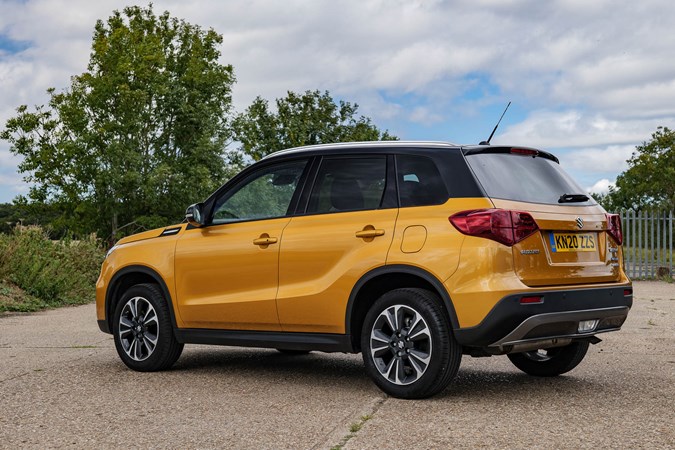
And I do. I’m not ashamed to say that I’d found and engaged Sport mode on the first drive.
In the Vitara this isn’t as cynical as in many other modern cars, though. Often you simply get more noise, heavier steering and sometimes more eager engine response, but not here. Suzuki’s system adjusts the way the all-wheel drive system works, genuinely making it feel like a sportier model altogether. It can do other things too though: the Snow mode is configured for slippery conditions, while a Lock mode prevents one wheel spinning away all the engine’s output by diverting torque to the others. Auto is the default setting, where the car figures it out for itself. It even has hill-descent control to make going down steep slopes easier to tackle.
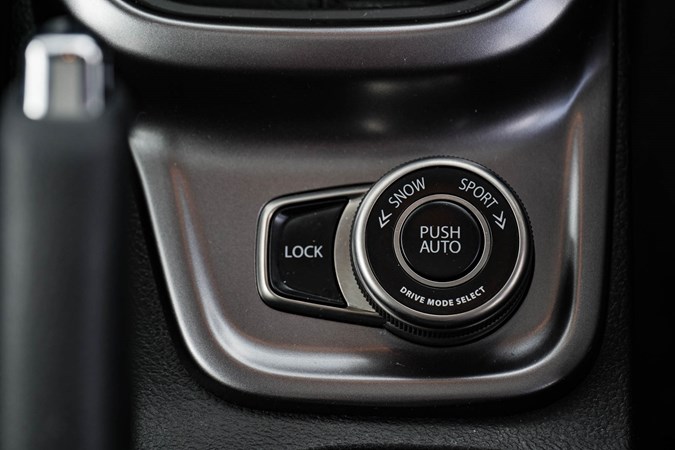
I’m very excited about the prospect of trying all this out over the coming months. Stay tuned for my next update to find out how things are going…
| Long-term test: Suzuki Vitara |
|
| Mileage | 1,001 |
| Real-world economy | 37.5mpg, 83% of official |
| Official economy / MPP | 45.4mpg / 5.5 |
| Joined Parkers | September 2020 |
Update 3: Vitara proving properly practical
While between 2020 lockdowns I’ve been covering quite a few miles in the Vitara, heading down to the south coast for a sailing trip and visiting family all around the UK where possible. It’s given me a real appreciation for the clever design of the Vitara; its elegant simplicity really appeals to my enthusiasm for engineering.
Take the boot, for example. Its overall capacity, which manufacturers quote in litres, isn’t the biggest in its class and the rear bench seat doesn’t slide like a VW T-Cross or Skoda Kamiq, but actually Suzuki has just made a fabulous job of building a boot that works. Its opening is nice and square, the load lip isn’t too high, and there’s a false floor that creates a flat surface from seat back to the rear extremity of the vehicle. This makes loading heavy items much easier because you don’t need to lift them up and over the lip.
There’s plenty of useful storage features in the boot itself, too. There are decently sized cubbies on either side and bag hooks to hang your shopping from, so there’s no excuse for loose items to be rolling around getting damaged.
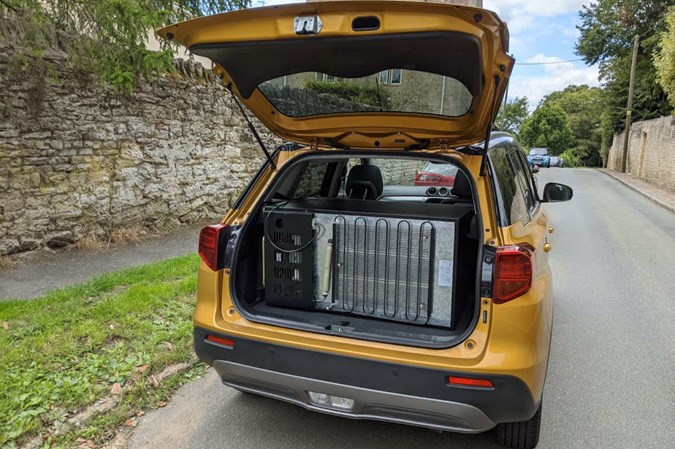
In fact, this usefully unassuming practicality continues on the inside of the car too. The doors open nice and wide for easy access, and each features a bin that’ll take a large bottle of soft drink. The two cupholders between driver and passenger are a little too far back for my seating position meaning I can only really use the forward-most one, but that’s a minor setback as I’d usually just use the doors.
My other main criticism of the Vitara’s construction isn’t anything to do with the car itself, but rather that I wish Google would hurry up and release wireless Android Auto to cheaper vehicles like this. The cable I use to connect my smartphone to the USB socket in the centre console invariably ends up wrapped around the gearlever, and that can be irritating when driving, for somewhat obvious reasons – particularly considering the new law stating you can’t touch your device.
And speaking of factors out of my control, I’ve had a flat tyre warning flash up on the dash. The car tells me I’ve lost around 2PSI, which could easily be anomalous, but having topped it up a few times using my incredibly useful USB-charged Mojietu Wireless Air Speed Pump it’s still dropping roughly 2psi per day. I’ve got a can of foam in the boot if the tyre decides to give up altogether, so while I’d prefer a spare wheel (many companies don’t provide these as standard now for weight reasons), I’m still mobile as things stand.
A call to the Peterborough Suzuki dealer later and I’m booked in to get it checked tomorrow. I’m assured the dealer is fully Covid-safe and the car will be sanitised before and after the work is carried out. It’ll be interesting to experience…
| Long-term test: Suzuki Vitara |
|
| Mileage | 4,124 |
| Real-world economy | 38.71mpg, 85% of official |
| Official economy / MPP | 45.4mpg / 5.5 |
| Joined Parkers | September 2020 |
Update 4: Does the Suzuki Vitara rule the off-road roost?
Did you know that 2020 marks half a century of Suzuki building 4x4 vehicles? The first was called the LJ, which was a three-seater and had an air-cooled twin-cylinder two-stroke 360cc engine with a heady 25bhp…
Fast forward 50 years and here we are: the firm is still building off-road-ready cars and the Vitara you see before is one of them.
In fact, that’s not entirely accurate, because the range does include some lesser two-wheel drive variants as well – lower weight and less resistance means 2WD cars are usually more efficient.
But at the upper end of the line-up features the spec I’ve got here: a petrol turbo engine, all-wheel drive and some clever electrics aimed at taking the stress out of slippery situations.
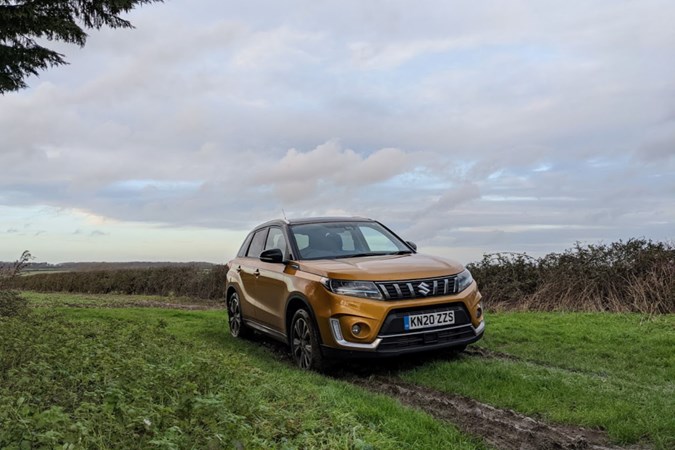
I’m not expecting Jimny-level mud-plugging capability, though, primarily because this is a far less compromised machine, with its useful abilities to carry five with a full boot, and do 70mph comfortably on the motorway. Sure, the Jimny can climb like a spider, but trust me it’s not great to live with for the vast majority of buyers.
It’d be rude not to take it off the beaten track and see what it’s like, wouldn’t it? One day after a forest walk with my wife I decided I’d do just that, and tackle a wet, rutted farm track with some serious hills to see if I could fluster this otherwise exceptional vehicle.
My first thought was just how easy this sort of driving feels in the Vitara. I was thankful for the relatively light electric power steering, which meant I could keep the wheels pointed where I’d like despite the groves in the mud trying their best to steer me off course.
Traction was impressive too, with only the deepest waterlogged holes causing the wheels to spin a little as the car extricated itself. I’m happy to report I got mud on the roof – the sign of an ace off-roading adventure.
But it never once failed to proceed, thanks in part to its decent ground clearance that allowed most road imperfections to sail by under the car.
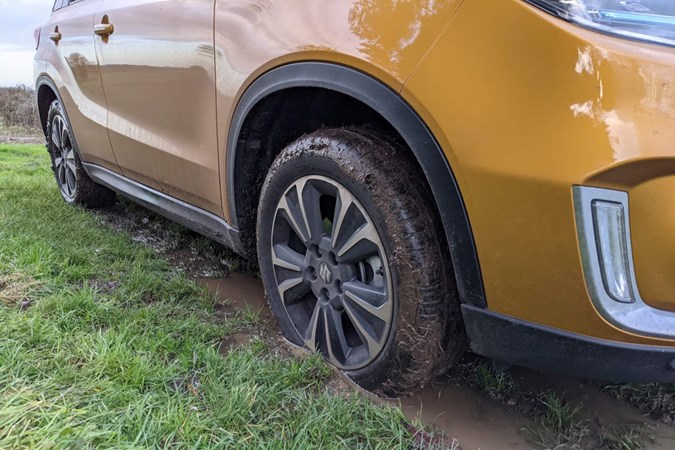
Scaling a particularly steep hill with loose dirt under the wheels, I pushed the button for Hill Descent Control (standard on SZ5 Vitaras) and let the car brake for me, keeping everything at a constant speed so I could concentrate on the steering. This system usually takes a leap of faith the first time you use it, because you’re effectively handing all braking over to a non-sentient being, but I’ve never driven a car where it doesn’t work perfectly.
However, this plucky Suzuki actually ended up being a little too good for my little terrain-tackling test. I’d wanted to try out Snow or Lock modes for the 4x4 system, which you select using the same rotary control as Sport mode I mentioned in a previous update. But the car didn’t need it. Left in Auto, it wrestled its way out of every scenario I could find. Both of these modes are made for slippery surfaces, commanding the car to use every wheel at all times. I’m a little ashamed to say that I’m sure it works well, but haven’t proven thus.
In conclusion I’d say that’s full marks for this SUV, but a poor grade for the driver’s efforts: must try harder.
| Long-term test: Suzuki Vitara |
|
| Mileage | 4,956 |
| Real-world economy | 39.94mpg, 88% of official |
| Official economy / MPP | 45.4mpg / 5.5 |
| Joined Parkers | September 2020 |
Update 5: Winter weather worries
Most of us have seen some pretty spectacular weather over the past few months, and my area in rural East Northamptonshire has been no exception. So I’m extremely pleased to report the Vitara remains a paragon of dependability in the face of conditions that left many other drivers stranded immobile, or even with seriously damaged vehicles.
First, it rained. And rained. And around here, that means flooding, as the River Nene and its tributaries fill to bank-bursting levels around Oundle. This intentional act of sending water over sacrificial plains is an effort to mitigate the impact of the river on Northampton, further down its course.
It isn’t uncommon for roads to be completely submerged, but on December 23 last year it was the worst that me or any of my neighbours had ever seen. Already having been out to a shop ahead of Christmas, I found myself having to doubleback on the A427 due to around two feet of water accumulating in a dip in the road. It’s a very manoeuvrable car, that Suzuki, with a small turning circle.
Still, I made it back to mine, only to find the drains were backing up. This could get serious pretty quickly, so I decided to dash back out to a plumbing shop for some emergency kit. This took me in a different direction towards Corby, and along that road I encountered huge pools of water that must have been 18 inches deep, hidden between dips in the road. The Vitara laughs in the face of conditions like this so I was able to navigate through slowly, but the 1990s Mercedes C-Class that hit one at 50-60mph wasn’t so lucky. When I slowed to check he was alright he was just putting his front bumper on the grass verge. That must have been quite an impact.

Fast-forward a couple of weeks and it snowed, again before I’d been to a shop. I took the decision to head out anyway, confident that the Vitara’s four-wheel drive, excellent lighting and absurdly bright paintjob would keep me on the straight and narrow. I put it in Snow mode for the whole way, which means permanent four-wheel drive and optimised traction control. I literally drove around other road users who’d been caught out by the sudden flurry on the hills around here, but saw the writing on the wall: once it got dark, carnage was on the way as vehicles would need to be abandoned. Time to dash back home. Despite the Vitara’s impressive capabilities, I wasn’t about to push my luck too far.
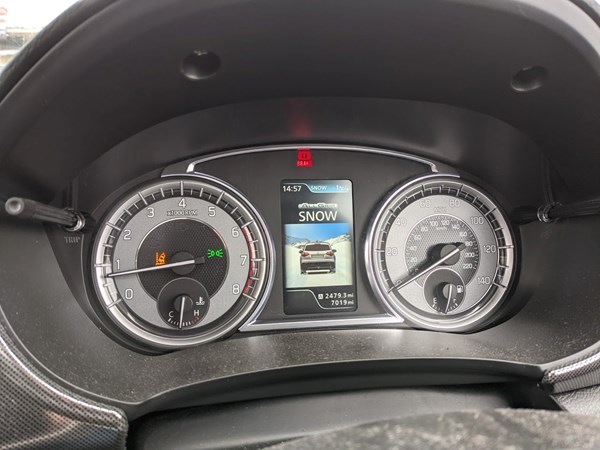
Negatives this month? I had a tyre pressure sensor anomaly that meant the car was insisting both fronts were flat. They clearly weren’t. If this happens to you, the way to fix it is to fill all four tyres up with 2-3psi more air pressure than recommended. This should clear the fault, at which point you can drop the pressures again.
There’s no manual reset function, you see. The car does it itself based on equal pressure in each tyre, which is fine as long as you know. I didn’t, but a kind man from Suzuki told me when I asked.
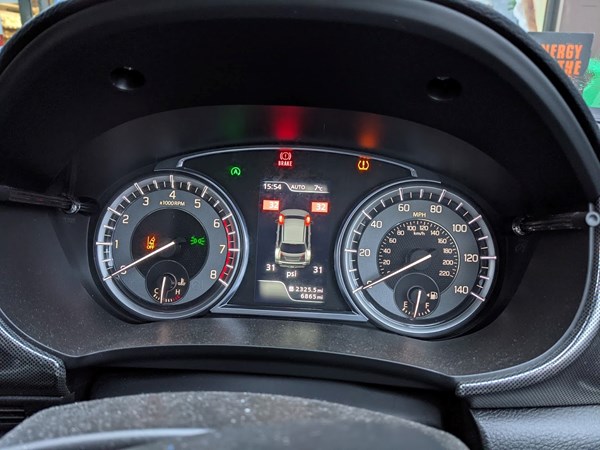
My other comment is about what this top-spec SZ5 model doesn’t get: I’d really love a heated windscreen so it clears quickly, and heated front seats would be a huge bonus too. Neither are offered on the Vitara, though, so I’d need to fit aftermarket bits (possible but expensive and often messy to install) or go without.
Considering how impressed I am with all other aspects of this Suzuki’s skills, I think I’ll take option B please Bob. A few moments’ extra winter warming-up isn’t the end of the world.
| Long-term test: Suzuki Vitara |
|
| Mileage | 6,086 |
| Real-world economy | 39.42mpg, 87% of official |
| Official economy / MPP | 45.4mpg / 5.5 |
| Joined Parkers | September 2020 |
Update 6: Waving goodbye to a commendable companion
Once I’d finished giving this SUV its final wash, it occurred to me that I’m not sure I’ve ever felt so sad at a car’s departure. The faithful Vitara has been wonderful company over the past six months, and I’m left wondering if there’s any other car out there with such a wide range of talents.
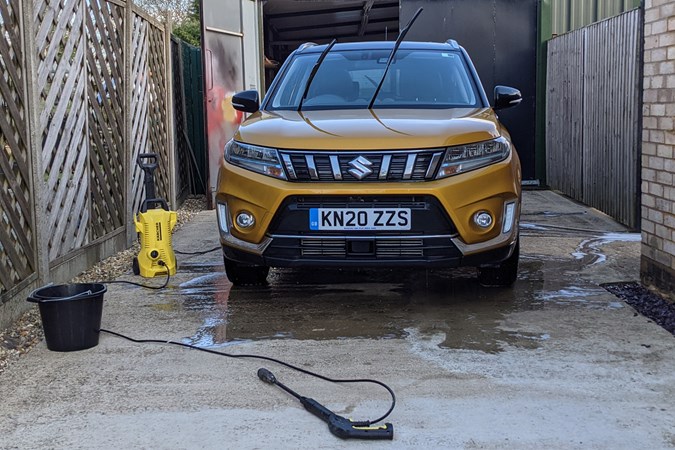
We’ve done all sorts together, from snowy essential journeys, over much longer distances when restrictions allowed, to tackling tougher terrain off-road. For my countryside lifestyle, it’s been almost perfect.
I say almost because its fuel economy isn’t the best – 40mpg was quite a challenge and a car claiming to be a hybrid should be able to do better than that.
But the trade-off for that was an emphatically entertaining engine. The 1.4-litre BoosterJet petrol powerplant is very rewarding to drive, with flexible delivery of its 129hp and a peppy sound that reminds you this motor originated in the Swift Sport; that car generates serious smiles per mile.
The transmission follows suit, with the six-speed manual gearbox a joy to employ, and the clever all-wheel drive system generating impressive traction in all conditions. It saved my bacon a couple of times on muddy farm tracks nearby, where a less car would definitely have got itself stuck.
It’s this ruggedness that leads me to my only other negative point: the doors. They are so light in weight, it’s on the verge of feeling cheap. Slam the door and there’s less of the thunk a VW or Toyota has, and more of a tinny crash. Sure, the Vitara is a lightweight car full stop: Suzuki says it tips the scales at 1,275kg, which is a good few hundred kilos less than a rival from VW, or indeed Toyota. Lighter means lower fuel economy and emissions, so again this cloud comes with an associated silver lining.
Sure, the £800 Solar Yellow paint may not have made it to my ideal spec list either, but colour is subjective and it does look brilliant in the sunshine when it’s clean.
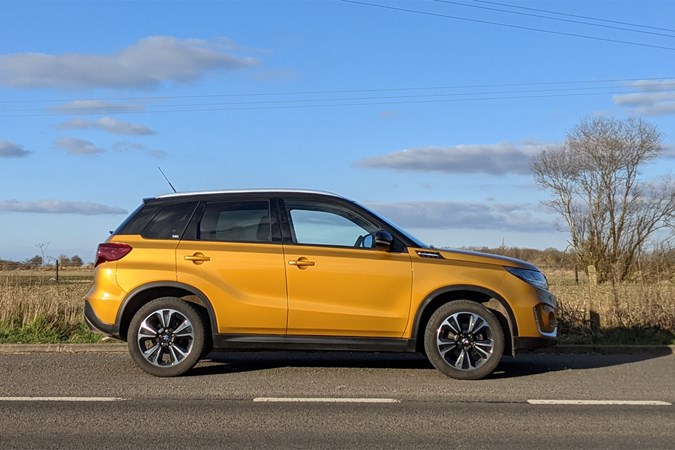
An aspect I definitely did enjoy was the multimedia system, which – thanks to Android Auto, admittedly – did everything I needed and more. I used the voice control button on the steering wheel more than I ever have before. There are newer solutions out there now, with wireless charging and connectivity, but I never felt short-changed. The clear, responsive touchscreen helped keep it feeling fresh, albeit with fingermarks that needed wiping every so often.
Elsewhere in the cabin the seats were great, with their manual adjustability easy enough for my wife and I to swap seats in a layby in decent time. The boot, with its flexible floor offering a flat surface from lip to the back of the rear seats, was big enough to fetch a fridge, swallow all my sailing gear, or transport a tree.
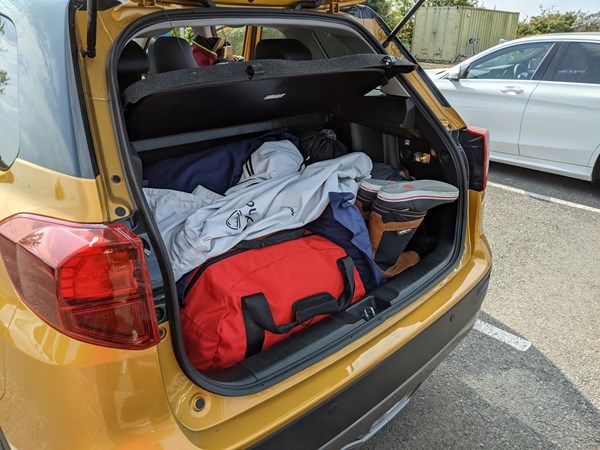
In fact, getting our Christmas tree home highlighted another plus point for me: that full-length, opening glass sunroof. As long as you keep the blind across when it’s hot (the cabin gets too warm too quickly otherwise), you’re able to enjoy a lighter experience in all weathers, and an open-air one when conditions allow. During summer it was joyous to drive around with the roof fully back and the wind in our hair.
In what’s been an incredibly strange time for us all, this little Suzuki has been dependable, useful and friendly. I’m genuinely impressed, and genuinely sad to see it go.

| Long-term test: Suzuki Vitara |
|
| Mileage | 6,974 |
| Real-world economy | 39.44mpg, 87% of official |
| Official economy / MPP | 45.4mpg / 5.5 |
| Joined Parkers | September 2020 |



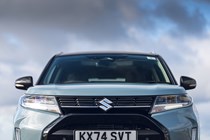
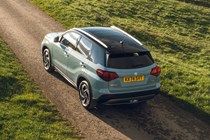
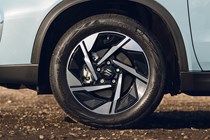

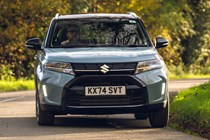
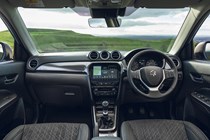
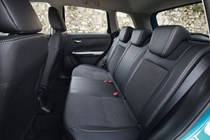
.jpg)
.jpg)
.jpg)
.jpg)
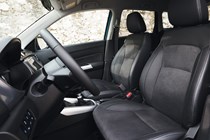

.jpg)
.jpg)
.jpg)
.jpg)
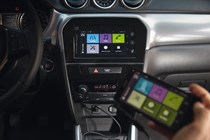
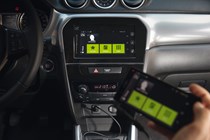
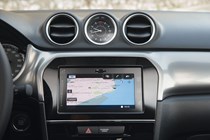
.jpg)
.jpg)
.jpg)
.jpg)
.jpg)
.jpg)
.jpg)
.jpg)
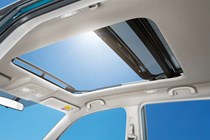
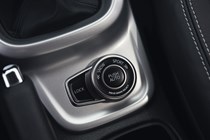
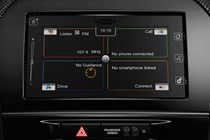
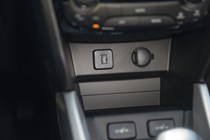
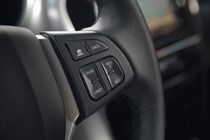
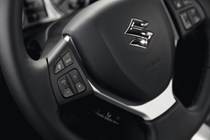
.jpg)
.jpg)
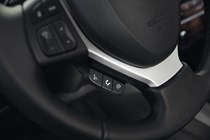
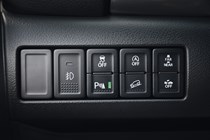
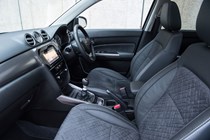
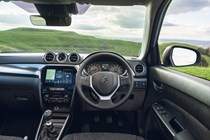
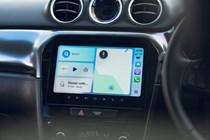
.jpg)
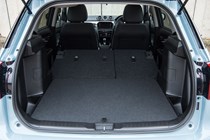
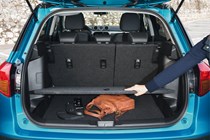
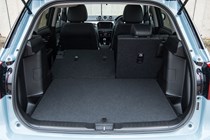








.jpg?quality=50)
.jpg?quality=50)
.jpg?quality=50)
.jpg?quality=50)


.jpg?quality=50)
.jpg?quality=50)
.jpg?quality=50)
.jpg?quality=50)



.jpg?quality=50)
.jpg?quality=50)
.jpg?quality=50)
.jpg?quality=50)
.jpg?quality=50)
.jpg?quality=50)
.jpg?quality=50)
.jpg?quality=50)






.jpg?quality=50)
.jpg?quality=50)





.jpg?quality=50)


